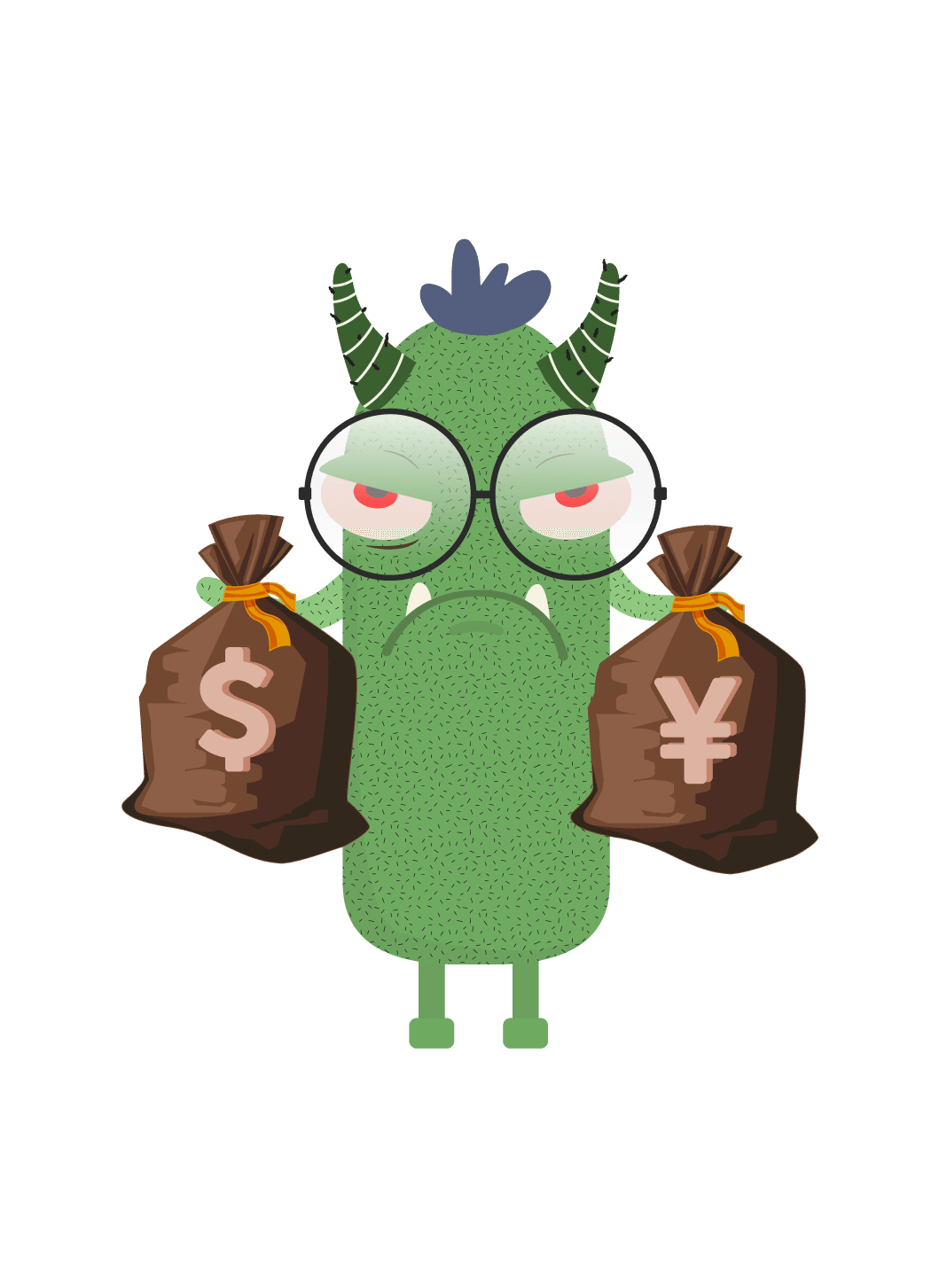Our partner, XM, lets you access a free demo account to apply your knowledge.
No hidden costs, no tricks.

Let me guess. You're on your 3rd Forex trading strategy, but profits are nowhere to be seen. I've been there, we've all been there, even the best traders have been there, it's nothing to be ashamed of. The good news is that there is a way out. Through proper backtesting, you can find a working strategy in no time.
In this guide, we have listed a few strategies that have helped us and many other traders get unstuck from failing trades and set on their merry way to financial independence. Let’s see what these strategies have to offer.
“Do not anticipate and move without market confirmation - being a little late in your trade is your insurance that you are right or wrong.” - Jesse Livermore


What is the best way to fight the odds? Well, the odds are stacked against every trader from the very day they enter the Forex market. So, is there any trading system that promises consistent profits no matter what your experience as a trader is?
While none of the strategies can guarantee 100% efficiency due to the extreme volatility and dynamics of the market, there are some that have proved to work with the vast majority of traders, if they know how to use them. Let’s examine those strategies and see if any of them can fit your trading style.
No one can doubt that the Forex market is purely driven by market sentiment, which in simple terms is the overall attitude of investors towards a particular event or financial instrument. Most of the time, it is the market sentiment that triggers trading decisions based on the emotions and thoughts of the masses. If you are successful in correctly predicting the mass reaction before the event, you make the right choice to buy or sell the instrument, and you're bound to take some profit. Of course, it is not as simple as just that. Market sentiment alone is not a profitable Forex trading strategy, but the logic and main idea behind market sentiment are pretty easy to grasp.
While we have a broad spectrum of emotions, there are three basic kinds of sentiment when we are talking about forming opinions on the Forex market:

When most of the traders feel that they have to sell a specific currency, the market sentiment is bearish, if the majority of them decide on buying it, then the market is bullish. If the investors are unsure of their decision, then the market is just plain confused. With this in mind, currency prices are nothing but the embodiment of the traders’ perception of reality (and maybe a bit of market manipulation from some commercial banks). For instance, almost 80% of all currency transactions in the Forex market have the US dollar on the opposite side, the traders will be focusing on what the majority of market participants think of USD performance.
Keep in mind that most traders are not financial experts and do not have the capacity to analyze various events in-depth. It means that they react to every single change and react with the very first intuition. Hence, if you correctly guess the mass reaction, market sentiment can be your best Forex strategy for consistent profits. For example, if the inflation rate is increasing in the United States, many people would assume that the dollar's value will decrease. So they might start investing in the currency that they believe will perform the best against the USD, such as the EURO.
To trade with the market sentiment strategy you have to pay attention to the most significant factors which are:
However, keep in mind that a market sentiment strategy does not have precise entry and exit signals, thus it is best if you use it in conjunction with technical analysis. Whereas market sentiment helps you discover your “what to do” action (sell or buy), technical analysis tells you when to act.
The trend is your friend until the very end, they say. It could easily be true, but the popularity of trend riding as a consistently profitable trading strategy is largely due to the comfort that trend traders get knowing that they are with the majority of the market. Imagine trend riding as steering your ship using the complete power of the wind. You will find it incredibly hard to go against the direction of the wind and will have to tackle tremendous stubborn resistance from the opposing side. This is extremely true when using Forex market trend riding. It is easier, and generally safer, to follow the trend rather than go against it.
The good news is that Forex tends to have plenty of trends on an hourly, daily, or weekly basis. So it does not really matter if you choose to be a scalper or swing trader, the trend is there for you to capture. We have three basic types of trends according to the timespan:
Primary trends last anywhere from 8 months to 2 years and primary trend traders look at fundamental features of the currency pairs. The intermediate trend can range from 1 to 8 months and will include a few counter-cyclical trends. It is best for position traders looking for ways to win at Forex consistently. Short-term trends are focused around a few days to a maximum of a month, even though many refer to hourly trends as short-term trends, as well. These trends are triggered by global capital flows that react to various economic and political news on a daily basis.
It is common sense that trends can be upwards or downward (uptrend, downtrend). But the direction can also be sideways, like the confusing market sentiment we described above. But the most important thing to know about trend riding is its four main stages:
The nascent trend is often a wrestle between bulls and bears. It is the most confusing stage for the market where you can notice sharp price rises. It is where the most aggressive traders enter the market hoping to guess the direction of the trend correctly. By the time we reach the second stage or fully charged trend, we already have a winner; either the bulls or bears. At this stage, the market will be sending the currency price higher for the uptrend or lower for the downtrend.
The third stage is when the trend gets old and tired. It happens when the majority of the market has already joined the bandwagon, but those who were late are trying to hop onto the trend and get their piece of the action. It is often inexperienced traders who are late on a trend and join at stage 3, which is frequently losing as experienced traders are faster to close their trades. By the end of the fourth stage, the trend is losing its power and starting to crumble.
The most profitable trading strategy would be to join the market at stage 1 or 2, where the first stage is for riskier and more experienced traders, while the second is the best for beginners and those with tight risk tolerance.

Many traders ask the question if they can generate passive income by holding a particular currency position over a longer period of time. The short answer is yes, they can, and it is called the carry trade strategy. However, this strategy is often favored by larger financial institutions like hedge funds or banks, but individual traders can also benefit from it. What makes carry trade a consistent Forex strategy is the interest rates that are attached to the currencies. The difference between the interest rates of different currencies is what gives rise to the carry trade concept.
The basic rule of a carry trade is to sell a low-interest-rate currency in order to buy a higher interest-rate currency. This approach intends to rely on the expectation of the high-interest-rate currency appreciating against the lower-interest-rate currency over time. The rough plan of carry trading looks like this:
However, while carry trading is considered a consistent trading strategy, it requires more investment from you than the rest of the strategies discussed in this article. The strategy also works with high-yielding assets and converting money into them. For instance, hedge funds and banks often borrow huge amounts of financial resources to buy currencies with low-interest rates and then invest the money in high-interest-rate assets, maybe even bonds. It is best if you trade on a large scale since the conversion from one particular currency to another is very small.
You have to pay attention to the financial institutions purchasing a certain currency when they attempt to carry trade. When you spot an increasing demand for a high-interest-rate currency, you know that it is your time to enter the market. This way you profit both from the interest spread and capital appreciation against the low-yielding currency. But there are several fundamental aspects that you should understand before implementing this strategy.
Every carry trader should be familiar with supportive factors including the economic and political conditions of the high-yielding currency and the widening interest rate gap. You should not get blinded by spiking interest rates, as there could be two reasons behind it. Typically, developed countries offering high-interest rates are the ones offering stable economic expansion. But quite a few developing countries also provide high-interest rates due to spiking inflation rates. While the first scenario is very attractive to investors, the second one scares them away. As for the interest rate gap, look for the wider difference between the currencies in a pair, and do not simply pick GBP/USD or any other famous asset you’ve heard about numerous times in the news.

Information is the most powerful tool at your disposal. It is a fact. In the Forex market, information pretty much equals money and if you implement the news-straddling strategy correctly you will become a master at translating information into money. Those who digest the news first and act upon it quickly generally turn out winners. We have already talked about market sentiment and how important traders’ feelings, thoughts, and anticipations are for asset performance. News straddling is very similar to it, but here, you learn how the market reacts to specific types of information and use the knowledge for your future trades.

There are 10 major kinds of economic news that drive the market crazy (at least in the major zones, such as EUR/USD):
Not all news is equally important. Interest rate decisions are the key news pieces that require serious scrutiny by investors. The majority of news traders will prepare for events such as official statements released by the Federal Reserve. They will set up their charts and place pending orders, and sit before their screens hours before the event to see how market sentiment might be playing out. The reason is that such significant news gets the fastest reactions from market participants. They either rush to sell their assets or buy assets.
You do not have to limit yourself to these pieces of news only and sit and wait for the official announcements. When using news straddling as your primary Forex profit strategy; television, online business magazines, and even Twitter economics-related pages should become your best friends. However, with the key events, there are several channels that you have to include in your daily trading calendar and start every morning by checking them. We will list a few major US economic releases below:
News straddling can be your most profitable Forex strategy or the greatest enemy of your money if you misjudge the direction in which the news will push the currency. With this strategy, there is a high risk of slippage due to the ultra-fast movement of the asset's price within these volatile market conditions. Slippage appears when your desired price of market entry or exit is different from the actual transacted price. Frequently, market makers tend to wait until the major movement in the market begins before they start filling your entry orders. Even more often, they will fill your stop-loss and profit limit orders before actually filing your entry order which can lead to wide slippage, meaning that you start your trade with a net loss.
Despite the slippage risk, news straddling remains a profitable Forex strategy for many. Some traders do not worry about the market makers depriving them of a huge chunk of their profits. But, there is a solution to the challenge; using the stop-limit entry order. It is a type of order which transforms into a limit order as soon as the asset reaches the designated stop price. After the limit is cleared, the stop-limit order instructs your broker to start trading. The majority of experienced traders use stop-limit orders with news straddling and successfully avoid slippage even with the determined market makers.
When you are just getting started in Forex or you do not have years of experience, it is very easy to make mistakes. Unfortunately, in the trading world, mistakes cost money. It goes without saying that you should research your broker before registering with it and that you should know your trading assets before you invest in them. I won’t be covering these aspects in this guide, but have prepared a list of the dos and don’ts based on the fundamentals of Forex and the most common misconceptions. Here are the 10 basic rules to follow for anyone wondering how to make profits in Forex trading consistently:
“Most traders take a good system and destroy it by trying to make it into a perfect system.” - Robert Prechter
There are four simple strategies that can turn your trading experience into a consistent money machine, but only if you apply them correctly. It does not matter whether you choose market sentiment, trend riding, carry trading, or news straddling as your primary strategy, you have to bear in mind that only definitions and guidelines are never enough to trade successfully.
In this article, you have learned the fundamentals of Forex, gotten to know the currencies and major economic factors that make markets move, understood the basics of technical and fundamental analysis, and gotten to grips with trading psychology.

Now you should have the answer for how to make consistent profits in Forex. Choose your strategy according to your budget, experience, and risk tolerance, and explore its effects on a demo account. Then once you have proven your strategy, find a good broker, deposit some funds, and start trading. Hopefully, through gaining more experience, you will soon start profiting consistently in Forex trading.
Our partner, XM, lets you access a free demo account to apply your knowledge.
No hidden costs, no tricks.
Nope. There are strategies that offer an 80% or slightly more profitability rate if applied correctly. But none of them can guarantee a no-loss trading experience. Some of the most efficient strategies often implemented by professional traders include a market sentiment strategy, trend riding, carry trade, and news straddling.
Trend riding is one of the most successful trading strategies so far, at least when automated. It implies identifying trend patterns of market prices and trading along with them. There are various theories used in trend riding, including Elliott Wave analysis, or momentum trading. However, since the most difficult part is actually identifying the trend and its stages, algorithms might work more precisely in this case.
News straddling is the easiest Forex trading strategy. It only involves three steps: read the news, think about what it means for the market, and trade accordingly. For instance, if you see some news that the US is having high inflation issues, then the market might see the USD go bearish. You can then buy the currency pair which has the strongest chance for gains, such as GBP/USD or EUR/USD.